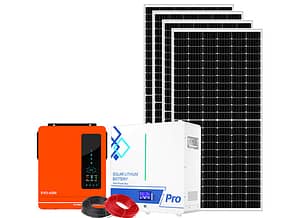Many businesses face payment challenges like late payments, which affect client relationships, slow down cash flow and hinder growth potential. Shifting from manual to automated invoicing systems allows businesses to maintain healthier finances and enhance efficiency while focusing on scaling. Keep reading to understand the efficiency and reliability that come with a well-structured invoice automation system.
Embracing invoice automation
Many businesses consider invoice automation a necessity rather than a luxury. The shift from traditional invoicing methods is accelerated by the challenges that come with them, like slow speed, difficulty in tracking and error-proneness. As a result, companies may face late payments, unnecessary administrative costs and/or misplaced documents. On top of financial strains, inefficiency of methods like paper invoicing and back-and-forth emails can limit cash flow and consequently harm client relationships. Relying on manual solutions, especially when competing globally, holds your company back from its full potential.
Digitalised billing cycle allows companies to accelerate processing time, smooth approval workflow and have real-time payment visibility. This is because automated systems reduce the risk of errors and ensure the company complies with financial regulations, building greater business confidence in different operations. On the employee side, invoice automation creates spare time to focus on initiatives that drive growth by eliminating repetitive tasks.
Why avoid manual invoicing systems
Manual invoicing, like email attachments and paper forms, is no longer viable. So, why should businesses make the shift?
Inefficiencies and waste of time
In this digital-first landscape, businesses need to save as much time as possible. Manual invoicing uses plenty of time at every stage, from formatting and data entry to sorting and approval. The entire process is repetitive, diverting energy away that could otherwise be used in strategic initiatives. On the other hand, automated invoicing systems eliminate this problem, creating enough time for your team to concentrate on growth-driven moves.
High operational costs
The number of hidden costs associated with manual invoicing is increasing daily. This includes printing, error resolution, labour, storage and postage. Automation systems cost 20 times less compared to manual processing in some companies. In terms of environmental impact, paper-based operations affect sustainability negatively. Shifting to digital processing helps large companies reduce resource consumption. The company may spend a lot of money trying to recover a damaged or lost paper-based record. Conversely, automated systems have security features and compliance that a modern business needs to thrive in this competitive market.
Human error and poor visibility
Mistakes, ranging from miscalculation to typos, are common when an invoice is crafted manually. These errors may look minor, but they have a large impact when it comes to payment speed, disputes and credibility of the firm. Automation solutions cut invoicing errors by checking for duplicates, data validation and entries standardisation.
To properly track payment statuses, due dates and outstanding invoices, a company needs a central system; otherwise, it is all a guessing game. With manual systems, the finance team will have to constantly reconcile records, wasting time, which, in turn, leads to financial blind spots due to forecast inaccuracies. Automation platforms are built to eliminate these challenges and make tracking faster, accurate and efficient.
Conclusion
Inefficiencies and payment problems because of using manual invoicing systems can hinder your business from sustainable growth. Therefore, leveraging invoice automation can help reduce human errors, streamline workflow and promote proper cash flow. In return, your business can strengthen client relationships and free up valuable resources for long-term success.
Get real time update about this post category directly on your device, subscribe now.






Leave a Comment